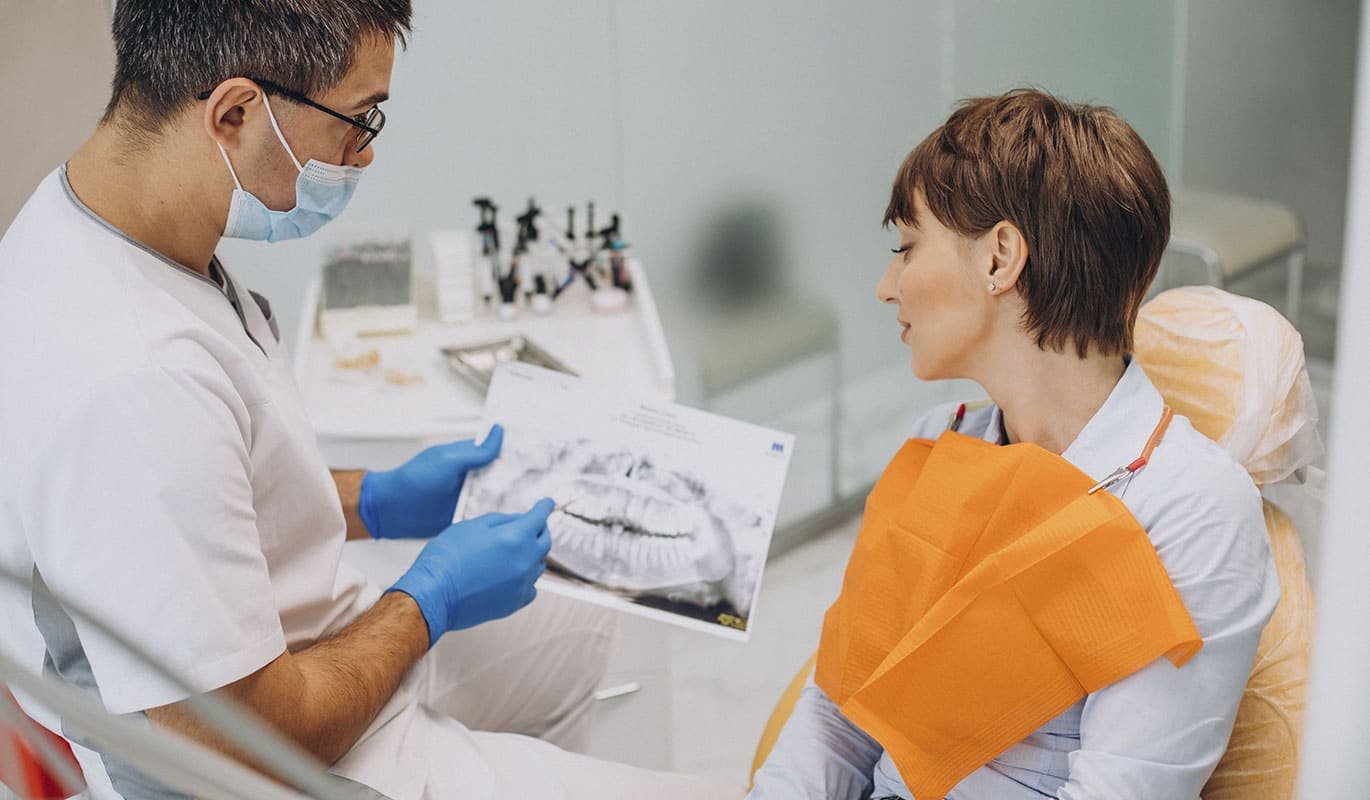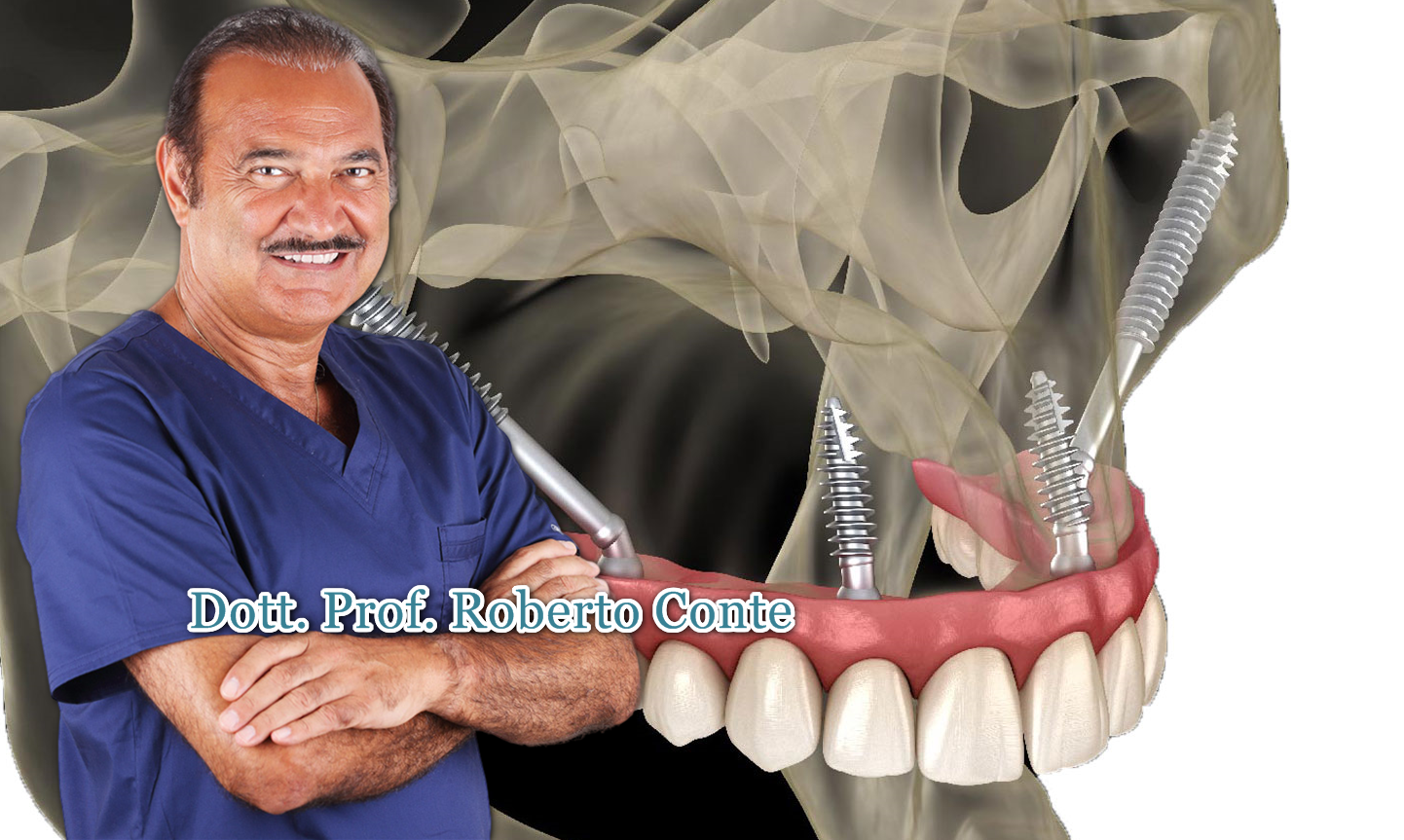In the interest of patients, this article will compare two zygomatic implantology techniques: the Quad Zygomatic, performed by 95-100% of the proposing physicians, with another less-known but highly performant zygomatic technique. This latter approach is more complex and can only be performed by a few specialized studies, involving both physicians and dental prosthetic technicians. It is known as Pterygoid Zygomatic. It is crucial for patients to be aware and understand the surgical, functional (in terms of chewing), and consequently, aesthetic differences between these two approaches.
Now, let me elaborate on the clinical case of Mrs. Marisa from Ferrara. She had a severe atrophy of the upper maxilla due to the use of a denture for several decades, contributing to a very severe bone resorption. After seeking consultations in various clinics and studies, she was told that her conditions were so severe that only a removable prosthesis, namely the denture, could be considered.
Mrs. Marisa contacted us, and after a visit, it turned out that her conditions were indeed severe. After opening her detailed clinical record, including medications taken and any pathologies, we opted for a definitive solution, namely Pterygoid Zygomatic implantology. Unfortunately, the Galileus Cercage Sinus procedure could not be performed as Mrs. Marisa, during the visit, showed no residual bone in the premaxillary area. Consequently, we could not find any anchorage point for the insertion of any type of implants, not even blade implants.
The patient scheduled the day of the intervention, which was carried out as planned. During the procedure, both zygomatic and pterygoid implants were successfully inserted, and she was provided with a provisional fixed prosthesis. Mrs. Marisa left our center, transitioning from a denture used for 20 years to an immediate provisional fixed dentition.
After the 6-month healing period, the provisional prosthesis was replaced with the definitive ceramic one, consisting of 14 teeth, ensuring complete satisfaction for the patient. This zygomatic solution, compared to the classical Quad approach, offers enhanced benefits, such as only two frontal zygomatic implants, thus less interference in the frontal aesthetic area for a less cumbersome and more refined prosthesis aesthetically.
The addition of posterior support with pterygoid implants contributes to achieving improved support and a more comprehensive, broader, better-distributed mastication with increased function and comfort. Lastly, the aesthetic solution in this technique is significantly improved, with less false gum due to the insertion of fewer frontal zygomatic implants, lengthening of the structure for an overall more linear and functional profile, featuring 14 teeth throughout the upper maxillary arch and improved sustainability and distribution of masticatory loads.
This is the real-life story of Mrs. Marisa from Ferrara, our patient who underwent Pterygoid Zygomatic implantology following our advice and recommendations. Today, witnessing, savoring, and experiencing the results, she is extremely content and grateful.



